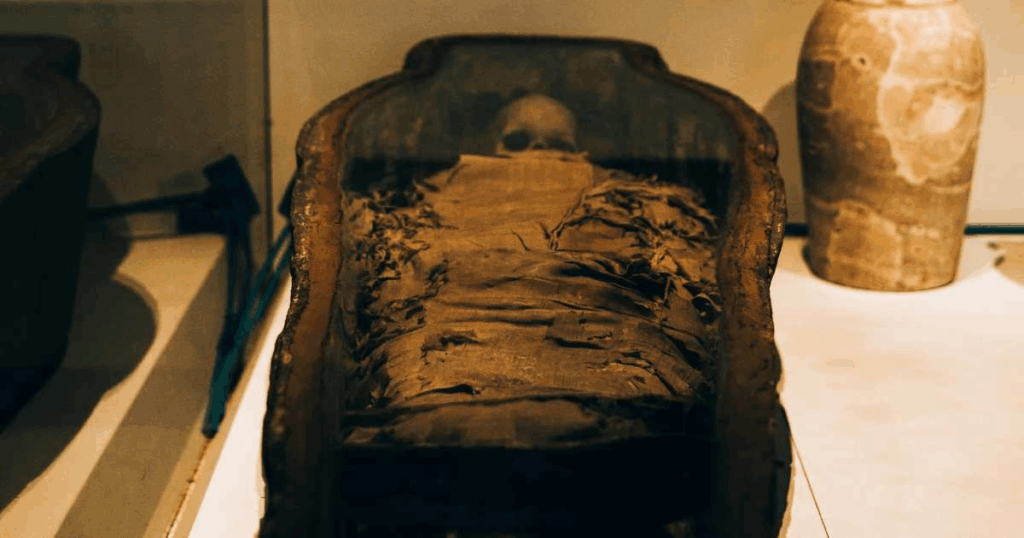
Nevada, USA — Deep in the silent desert of northern Nevada, a discovery once dismissed as ordinary would later become one of the most shocking archaeological finds in North American history. The “Spirit Cave Mummy” isn’t just ancient — it’s a puzzle that challenges everything we thought we knew about early life in the Americas.
A Shocking Discovery in a Silent Cave
In 1940, archaeologists Sydney and Georgia Wheeler uncovered a naturally mummified human body wrapped in woven reed mats inside Spirit Cave, near Fallon, Nevada. At first, scientists estimated the remains to be a few hundred years old.
It wasn’t until the 1990s, with the introduction of advanced radiocarbon dating, that the truth came out:
This mummy was over 9,400 years old.
That makes it the oldest known naturally mummified human ever found in North America.
More Than a Mummy — A Time Traveler from Prehistory
- The body was remarkably well-preserved thanks to the cave’s dry, cool conditions.
- The skull and dental structure showed unexpected features that set it apart from known Native American remains at the time — sparking speculation about his origin.
- Items buried with him, like baskets and stone tools, showed signs of sophisticated living, not primitive survival.
The Controversy: Was He Native… or From Somewhere Else?
The Spirit Cave Mummy ignited decades of debate among scientists, politicians, and Native communities.
- Some researchers suggested the man may have descended from an unknown migration wave, possibly even from Asia or Europe — long before any recorded Native tribes.
- Native groups, however, demanded the return of the remains, claiming ancestral ties.
The issue led to a legal standoff that lasted over 20 years. Finally, in 2016, a full DNA analysis revealed the truth:
The mummy was genetically linked to the Fallon Paiute-Shoshone Tribe, whose people still live in the region today.
In 2018, the tribe performed a sacred reburial, finally laying their ancient ancestor to rest.
Final Thought: Is History Missing Something Big?
The Spirit Cave Mummy is more than just a skeleton in the desert — he’s a silent reminder that human history in the Americas may be far deeper and more complex than we imagined.
Somewhere in another cave, canyon, or forgotten valley, more stories may be waiting — stories that challenge textbooks and spark new questions about who really came first.